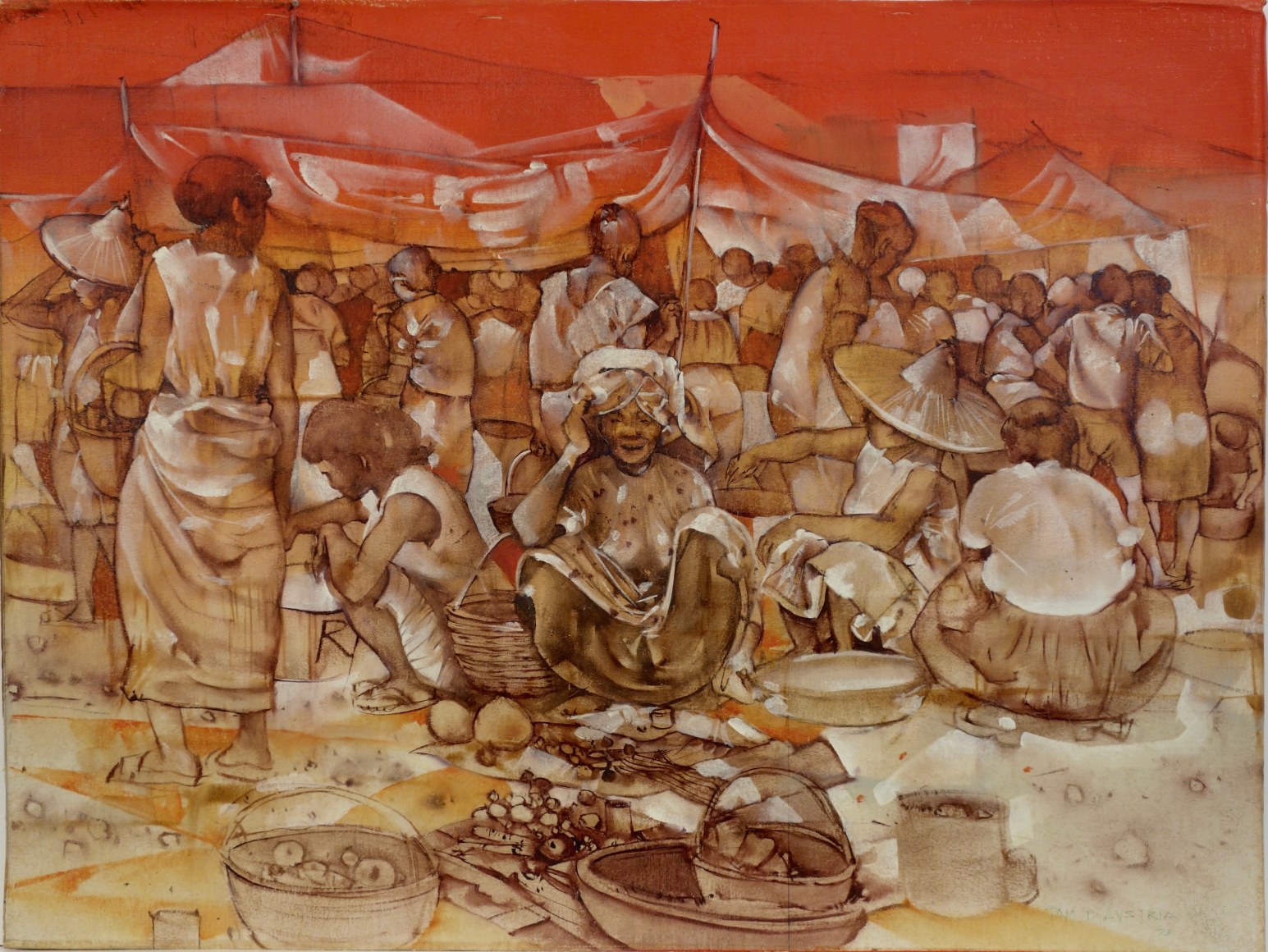Tam Austria

Vendors, 1973
Tam Austria (born 1943)
A highly skilled figurative artist who excels in the dynamics of realism, Tam (for Anastacio) Austria is a collectors’ favorite. His followers do not seem to find the long wait for an Austria work. This is, concededly, the best proof that the 46-year-old Austria, son of peasants parents from Tanay, Rizal, had indeed gone a long way from his humble origins.
Austria’s artistic odyssey began in the 1950s. The boy Austria turned out a highly realistic oil painting of Christ with a crown of thorns – an impressive first work for one who was not even 10 years old. The parish priest, who must have noticed the early signs of artistic talent in Austira who served him as altar boy, gave the youth his fist exposure to art. The generous priest was also instrumental in winning a four-year high scholar scholarship for the evolving artist. In 1960, Austria enrolled at the University of Sto. Tomas for a degree in fine arts. He was a standout and easily won a number of prizes for his early efforts.
Carlos “Botong” Francisco, the national artist for painting, whom Austria admired deeply, encouraged the artist to join the Ayala Museum as artist and illustrator. His first project was to design the museum’s diorama of Philippine history. His considerable gifts caught the attention of the Zobel de Ayala family, prominent art patron, who offered him a commission to do a mural, along with Fernando Amorsolo and Fernando de Ayala, for the St. Anthony Chapel in Forbes Park.
Featured works
Biography
Sometime in 1970, Austria mounted his first exhibition at Marcel’s Gallery of Fine Arts in Oakland, California. In the same year, he represented the Filipino community in the International Art Festival in Berkeley, California. This was soon followed by exhibitions in San Francisco, California, as well as the Hidalgo Gallery in Makati (1972), the Galerie Beue (1973), Hyatt Regency (1975) and Sining Kamalig (1976). A high point in his career was his nomination as one of the five finalists in the 1983 Mobil Art Awards.
Austria’s work reveal the artist’s preoccupation with the myths and legends of his people, the mother and child, the peasant folk, their customs and traditions, the colorful panorama of rural landscape. They figure prominently in his works because of their timeless and universal appeal, he explains. “I think my work reflects a number of basic truths, perhaps, too, nostalgia for the good things slipping away. Then there are the earth, the fields, the sky, the quiet corner people long for. Perhaps people are drawn to my painting by common feelings that go beyond art.”
Austria has succeeded in fusing disparate elements of painting into fully orchestrated compositions that have captured critical interest in his works. As the art critic and author Manuel Duldulao explained: “Every painting (of Austria) works to achieve a fusion of form and content that transcends the narrative or symbolic implication.”
In due recognition of Austria’s creative ability and the distinctively Filipino spirit that his works project, the Development Bank of the Philippines honored him with its corporate award, citing two murals, Balikatan and Pagdiriwang, in particular, as “the epitome of his artistry”.
The award’s citation reads: “In his hands, craft and vision are fused. He transcended the narrow medium, investing his murals and easels with the robust spirit and infectious gaiety of simple folks whose joys and sorrows he captured on canvas with enviable fidelity.”
The recognition is well-deserved.
Source: http://artodyssey1.blogspot.com/2013/08/tam-austria.html
